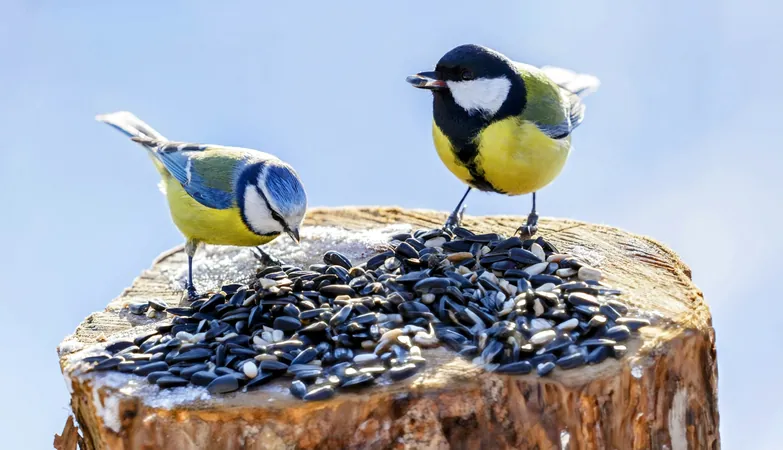
How Immigrant Birds Are Revolutionizing Social Learning!
2024-11-17
Author: Mei
A Quirky Legacy of the Great Tit
The great tit has long been known for its cleverness, gaining notoriety in the 1920s when these birds began raiding milk bottles across Europe to feast on the cream inside. This ingenious behavior raised questions among scientists about how such skills spread through avian populations, leading to speculation about their ability to learn from their peers.
The Catalyst for Change
In 2015, researcher Lucy Aplin from the University of Oxford kickstarted a pivotal study on social learning among great tits in an English forest. Her findings suggested that these birds were capable of mimicking one another to access food, reinforcing the idea that social learning played a crucial role in their behavior.
But what factors influence this learning process? A recent study led by postdoctoral researcher Michael Chimento explores this question further. The research hypothesizes that in unfamiliar environments, birds are more observant and willing to learn from others, especially during periods of immigration.
Experimenting with Social Dynamics
To test this theory, researchers created experimental groups of wild-caught great tits using automated puzzle boxes to gauge their learning behaviors. Each group included a "tutor" bird, trained to solve puzzles for food in specific ways. The twist? Birds were relocated from their native environments to interact with resident birds using alternate methods.
The results were astounding: most immigrant birds quickly adapted, often immediately adopting the local birds’ strategies. The success of this learning was significantly influenced by the new visual environment—the foliage in their new surroundings made a remarkable difference. In aviaries with altered vegetation, immigrant birds learned much faster than those in unchanged environments.
The Larger Implications for Ecosystems
This pivotal study provides the first experimental evidence of immigration's role in shaping animal behavior. Understanding how great tits and other species adapt through social learning can inform conservation strategies, especially vital as ecosystems face the pressures of climate change and habitat loss.
The ripple effects of these findings extend beyond individual species—when birds learn to adapt swiftly to their surroundings, it can enhance biodiversity and create resilient ecosystems.
Birds and Humans: A Mirror of Social Learning
Remarkably, the patterns observed in avian social learning mirror human behavior. Just like great tits adapt by observing others, humans have thrived by mimicking behaviors within communities. This evolutionary capability has allowed us to navigate diverse environments, making the study of bird learning a rich source of insights into our own adaptive strategies.
This research amplifies our understanding of social learning in animals and its importance for survival. Experiments such as these not only highlight the cleverness of birds but underscore the interconnection of all life, illustrating shared strategies underlying successful adaptation.
As the world changes rapidly, insights from this study could be crucial for preserving biodiversity and ensuring the survival of various species.
The complete study is published in the journal PLOS Biology, revealing a new chapter in our understanding of animal behavior.
Stay tuned for more extraordinary discoveries about the natural world!

 Brasil (PT)
Brasil (PT)
 Canada (EN)
Canada (EN)
 Chile (ES)
Chile (ES)
 España (ES)
España (ES)
 France (FR)
France (FR)
 Hong Kong (EN)
Hong Kong (EN)
 Italia (IT)
Italia (IT)
 日本 (JA)
日本 (JA)
 Magyarország (HU)
Magyarország (HU)
 Norge (NO)
Norge (NO)
 Polska (PL)
Polska (PL)
 Schweiz (DE)
Schweiz (DE)
 Singapore (EN)
Singapore (EN)
 Sverige (SV)
Sverige (SV)
 Suomi (FI)
Suomi (FI)
 Türkiye (TR)
Türkiye (TR)